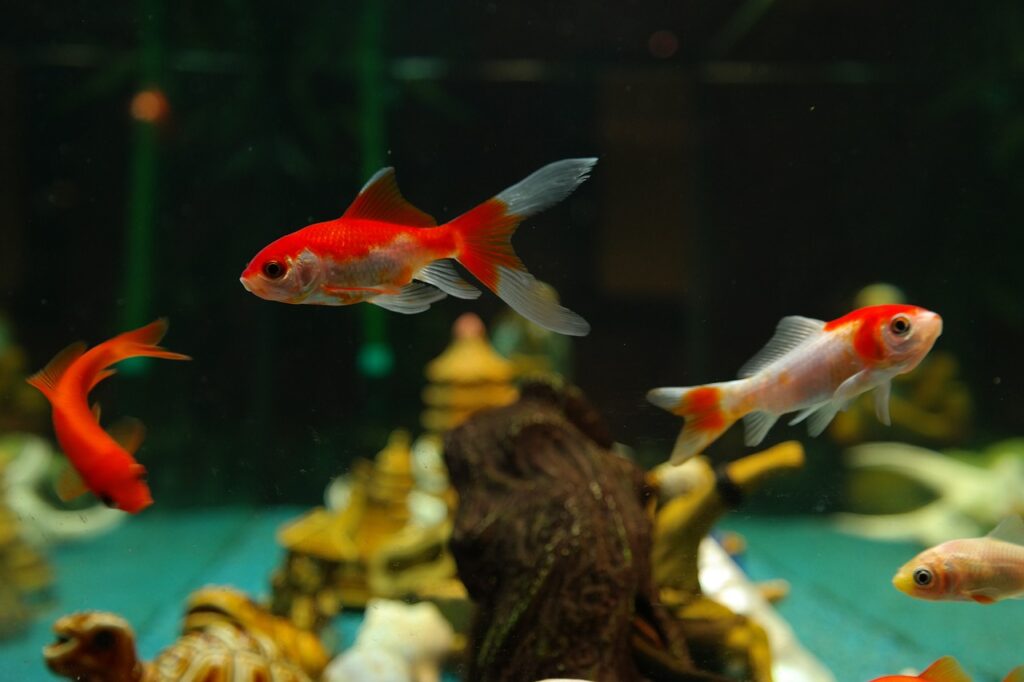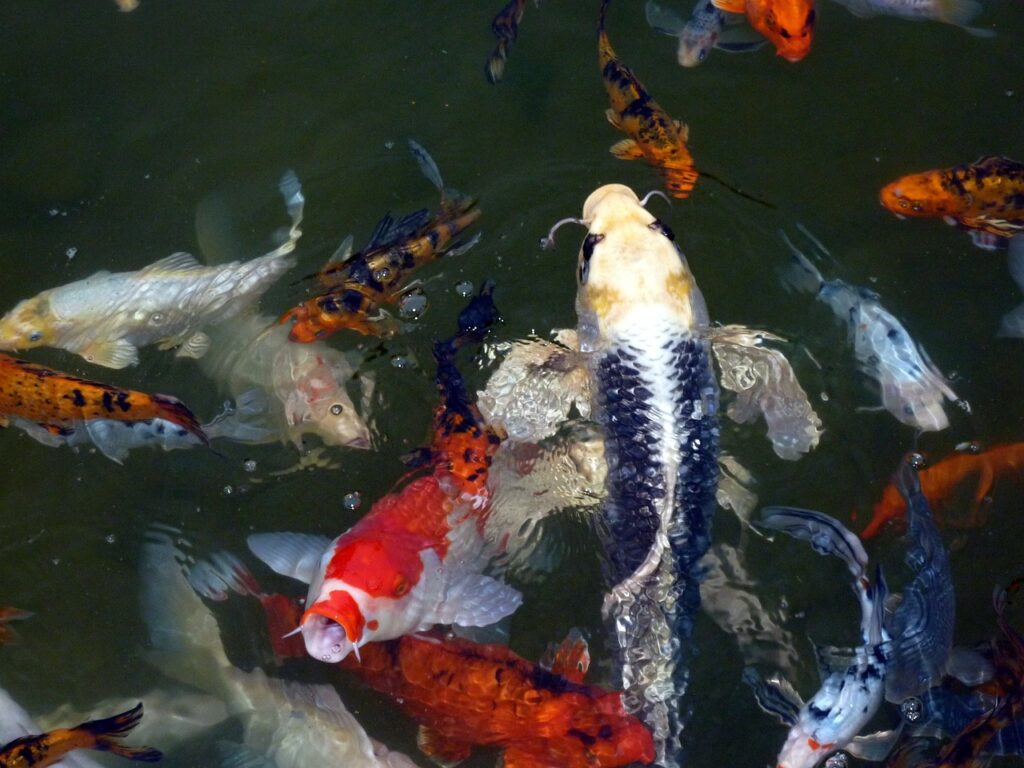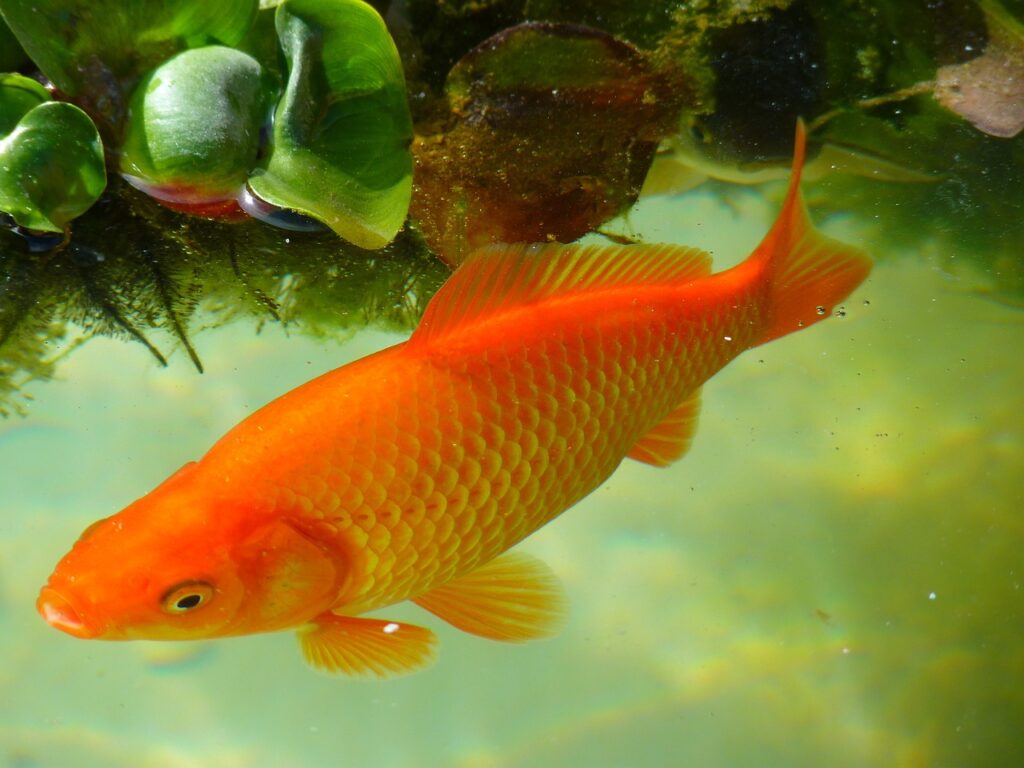If you’ve ever wondered about the process of breeding pond fish, look no further. We are going to provide a comprehensive guide on how to breed pond fish, offering detailed steps and helpful tips to ensure the health and well-being of your aquatic companions.
Whether you’re a beginner or an experienced hobbyist, this article will equip you with the knowledge and confidence to create a thriving breeding environment for your pond fish. From selecting the right breeding pairs to creating ideal spawning conditions, you’ll discover all the essential aspects of successful pond fish breeding.
So, get ready to embark on an exciting journey into the world of pond fish breeding and watch your fish population flourish.

Understanding Pond Fish Breeding
Breeding pond fish can be an exciting and rewarding experience. Whether you are a beginner or an experienced fish enthusiast, understanding the different aspects of pond fish breeding is essential for success. This comprehensive article will guide you through the types of pond fish, their life cycle, factors affecting breeding, and more.
Types of Pond Fish
Before you embark on your breeding journey, it’s important to familiarize yourself with the different types of pond fish. There are several popular species that are commonly bred in ponds, such as koi, goldfish, and guppies. Each species has its own unique characteristics, breeding requirements, and care needs. Understanding the specific traits of the species you are interested in breeding will help you provide the optimal breeding conditions.
Life Cycle of Pond Fish
To successfully breed pond fish, it’s crucial to have a good understanding of their life cycle. Most pond fish follow a similar life cycle pattern, starting as eggs, hatching into fry, and eventually maturing into adult fish. Each stage of the life cycle requires specific care and attention. By familiarizing yourself with the life cycle of your chosen fish species, you can determine the appropriate breeding conditions and care techniques at each stage.
Factors Affecting Breeding
Breeding pond fish is influenced by various factors, including water temperature, water quality, and the availability of suitable breeding partners. Water temperature plays a vital role in initiating the breeding process, as certain fish species require specific temperature ranges for successful reproduction. Maintaining proper water quality is essential for the health and well-being of the breeding fish and their offspring. Additionally, ensuring a balanced male-to-female ratio and selecting compatible breeding pairs are crucial for successful breeding.
Preparing the Breeding Environment
Creating the perfect breeding environment for your pond fish is essential for their reproductive success. Here are some key steps to prepare the breeding environment:
Choosing the Right Pond
When it comes to breeding pond fish, the selection of the right pond is critical. Look for a pond that provides ample space for the fish to swim and breed comfortably. Avoid overcrowding, as it may lead to stress and reduced breeding success. Additionally, consider the presence of adequate sunlight and shade in the pond, as this can impact the growth and health of the fish and their offspring.
Creating Suitable Water Conditions
Maintaining suitable water conditions is vital for the health and breeding success of your pond fish. Test the water regularly to ensure it is within the optimal range for your chosen fish species. Factors such as pH levels, ammonia, nitrate, and oxygen levels should be monitored and adjusted as needed. Providing clean, well-oxygenated water will promote healthy breeding behavior and increase the chances of successful reproduction.
Providing Adequate Shelter and Plants
Pond fish require proper shelter and plants to create a conducive breeding environment. Introducing floating plants, submerged vegetation, and rock structures into the pond will offer hiding spots for the fish and protect their eggs from predators. These sheltered areas also provide a safe space for the fish to engage in courtship and mating behaviors. Adding plants not only enhances the aesthetics of the pond but also contributes to the overall well-being of the fish.
Feeding and Conditioning the Fish
Proper nutrition and conditioning play a crucial role in promoting reproductive success in pond fish. Here are important considerations when feeding and conditioning your fish for breeding:
Balanced Nutrition
Providing a balanced diet is essential for the overall health and vitality of your fish. High-quality commercial fish foods specifically formulated for your chosen fish species should be the foundation of their diet. These foods typically contain a mix of proteins, fats, carbohydrates, and essential vitamins and minerals necessary for optimal growth and reproduction. Supplement the commercial diet with occasional treats like live or frozen foods to provide variety and simulate their natural diet.
Supplemental Feeding
In addition to their regular diet, supplementing your breeding fish’s nutrition is crucial to enhance their reproductive capabilities. Adding protein-rich foods like bloodworms or brine shrimp to their diet a few times a week can increase their energy levels and stimulate breeding behaviors. These supplemental feedings help ensure that the fish are receiving the necessary nutrients required for successful reproduction.
Conditioning for Breeding
Conditioning your breeding fish before the breeding season is a vital step in the breeding process. To condition the fish, gradually increase their feeding frequency and offer more protein-rich foods. This period of conditioning will help optimize the fish’s health and enhance their reproductive abilities. Providing a stable environment with consistent water conditions and maintaining a well-balanced diet will improve the chances of successful breeding.

Spawning and Egg Care
Once your pond fish are adequately conditioned, you can expect them to exhibit mating behaviors and spawn. Here’s what you need to know about spawning and egg care:
Identifying Mating Behaviors
Before spawning, pond fish engage in specific behaviors to signal their readiness to reproduce. These behaviors vary among different fish species and may include chasing, courtship displays, bubble nests, or territorial behaviors. Observing these mating behaviors can indicate that the fish are approaching the breeding stage. Familiarize yourself with the specific mating behaviors of your chosen fish species to identify when they are ready to spawn.
Preparing the Spawning Area
Creating a suitable spawning area is crucial to ensure the safety and viability of the eggs. Many pond fish prefer to lay their eggs on submerged plants, rocks, or other surfaces within the pond. Introduce spawning mops or artificial surfaces like spawning brushes to mimic natural breeding environments. These materials provide a convenient substrate for the eggs to attach to and protect them from being eaten or damaged. Monitor the spawning area closely to ensure that the fish have adequate access and space to lay their eggs.
Collecting and Caring for the Eggs
If you wish to improve the survival rate of the fish offspring, you can collect the eggs and provide them with dedicated care. Delicately remove the eggs from the spawning area using a soft mesh net and transfer them to a separate container or incubation tank. This isolation protects the eggs from potential predators and allows you to closely monitor their development. Maintain optimal water conditions, such as suitable temperature and water quality, to ensure the successful hatching of the eggs. Once the eggs have hatched into fry, they can be transferred back to the pond.

Incubating the Eggs
Incubating pond fish eggs in a separate tank offers numerous advantages, including better control over water conditions and increased survival rates. Here’s how to ensure optimal incubation conditions for the eggs:
Using a Separate Incubation Tank
Set up a separate tank specifically designated for incubating the fish eggs. This tank should be well-filtered, ideally with a sponge or gentle filtration system to prevent the fry from being sucked into the filter. Fill the tank with the appropriate amount of water from the main pond and closely monitor and adjust the water parameters as needed to match the ideal conditions for the specific fish species. The separate incubation tank allows you to closely monitor the eggs’ development and ensure their safety from potential threats.
Water Quality and Temperature
Maintaining optimal water quality and temperature is vital during the egg incubation period. Regularly test the water parameters, including pH, ammonia, nitrate, and temperature, to ensure they remain within the suitable range for your particular fish species. Keeping the water clean and stable prevents the development of harmful bacteria and promotes healthy egg development. Adjust the temperature if necessary, as certain fish species require specific temperature ranges for successful incubation.
Ensuring Sufficient Oxygenation
Adequate oxygenation is crucial for the eggs’ proper development and hatching. Ensure that the incubation tank is equipped with a reliable and efficient aeration system or air stone to deliver a steady supply of oxygen to the eggs. Monitor the oxygen levels regularly to verify that they remain within the acceptable range. Proper oxygenation promotes healthy development and enhances the chances of successful hatching.
Raising Fry
Once the eggs have hatched into fry, their care and feeding requirements change. Here’s what you need to know about raising fry:
Separating Fry from Adult Fish
To increase the survival rate of the fry and prevent them from becoming prey, it’s advisable to separate them from the adult fish. Transfer the fry to a separate nursery tank equipped with appropriate filtration and temperature control. This ensures that the fry have a safe environment to grow and develop without competition from the adult fish. Separating the fry also allows for better control over their feeding and monitoring their growth progress.
Feeding Fry with Suitable Food
Proper nutrition is crucial during the fry stage, as it significantly impacts their growth and development. Feed the fry with a diet specifically formulated for their nutritional needs. Commercial fry foods, microorganisms, or infusoria are suitable options to start with, as they are easily digestible and provide essential nutrients. Progressively introduce larger and more substantial food particles as the fry grow. Regularly monitor their feeding behavior and adjust the feeding frequency and portion sizes accordingly.
Monitoring Water Parameters
Maintaining optimal water conditions is essential for the health and growth of the fry. Monitor the water temperature, pH levels, ammonia, and nitrate levels regularly to ensure they are within the appropriate range for the specific fish species. Provide a suitable filtration system to maintain water quality and eliminate any accumulated waste. Consistently monitor the water parameters to detect any changes that may affect the fry’s well-being.

Managing and Preventing Diseases
As with any living organisms, pond fish are susceptible to diseases. To ensure the health of your breeding fish and their offspring, it’s important to understand common diseases, take preventive measures, and be familiar with treatment options:
Common Diseases in Pond Fish
Pond fish may be susceptible to various diseases, including bacterial, fungal, and parasitic infections. Common diseases include fin rot, ich, bacterial infections, and swim bladder disorders, among others. Understanding the symptoms and identifying the cause of the disease is the first step toward effective treatment. Research the specific diseases that affect your chosen fish species to recognize early signs and prevent outbreaks.
Preventive Measures and Quarantine
Prevention is key to maintaining disease-free pond fish. Establishing a quarantine process for new fish additions can significantly reduce the risk of introducing infections or parasites to your pond. Quarantine new fish in a separate tank for observation and treatment if necessary. Additionally, practicing good pond hygiene, maintaining optimal water quality, and providing a balanced diet will help boost the fish’s immune system and minimize their susceptibility to diseases.
Treatment Options for Infected Fish
If you identify symptoms of disease in your pond fish, prompt action is crucial. Isolate the infected fish and consult with a knowledgeable veterinarian or aquatic specialist to determine the appropriate treatment. Treatment options may include medicated baths, topical treatments, or administering medications in the fish’s food. Follow the treatment recommendations carefully and monitor the fish closely to ensure a successful recovery. Isolate infected fish until they have fully recovered to prevent the spread of diseases to other pond inhabitants.
Culling and Selective Breeding
Breeding pond fish offers the opportunity to enhance desirable traits and improve the overall quality of the fish population. Here’s what you need to know about culling and selective breeding:
Determining Breeding Quality Fish
In order to selectively breed pond fish, it’s essential to determine which fish possess desirable traits worth propagating. Evaluate the fish based on characteristics such as coloration, body shape, fin structure, and overall health. Selecting high-quality fish with preferable traits increases the likelihood of producing offspring with similar traits.
Culling Undesirable Traits
Culling involves removing or eliminating fish that exhibit undesirable traits or genetic defects. Regularly assess the breeding stock and perform culling to maintain the desired characteristics. Culling helps prevent the propagation of undesirable traits, ensures the genetic integrity of the breeding population, and improves the quality of future generations. Responsible culling is an important aspect of selective breeding and contributes to the overall health and vitality of the fish population.
Maintaining Genetic Diversity
While selective breeding aims to enhance specific traits, it’s important to maintain genetic diversity within the fish population. Avoid excessive inbreeding, as it can lead to weakened immunity and increased susceptibility to diseases. Introduce new genetic material from unrelated fish periodically to enhance the overall genetic diversity of the population. Proper management of genetic diversity ensures the long-term viability of the fish population and reduces the risk of potential health issues.
Addressing Challenges and Troubleshooting
Breeding pond fish may come with its fair share of challenges and obstacles. Here are some common challenges you may encounter and how to address them:
Low Breeding Success Rates
If you are experiencing low breeding success rates, it may be due to various factors. Poor water quality, incompatible breeding pairs, or inadequate nutrition are common causes of low breeding success. Assess and improve the quality of the water, select suitable breeding pairs, and ensure a balanced and nutritious diet for the fish. Seek advice from experienced breeders or consult with aquatic specialists to troubleshoot the specific issues affecting your breeding success.
Handling Breeding Failures
Breeding failures can be disheartening, but they provide an opportunity for learning and improvement. If your breeding attempts have been unsuccessful, evaluate the breeding environment, water conditions, and fish health. Make adjustments based on your observations and research to enhance the chances of success in future breeding endeavors. Keep in mind that breeding fish can be a complex process, and some failures may be inevitable. Patience and perseverance are key to achieving successful breeding outcomes.
Dealing with Predators or Unwanted Breeding
Predators and unwanted breeding can pose challenges when trying to maintain a controlled breeding environment. Unwanted breeding may result in overcrowding and an unbalanced fish population. Consider introducing natural predators or implementing physical barriers to control the predator population and prevent unwanted breeding. Carefully monitor the pond and take appropriate measures to manage the fish population and maintain a healthy breeding environment.
Expanding the Pond Fish Population
Successful breeding may lead to a thriving pond fish population. Here are some considerations for expanding your fish population:
Introducing New Fish to the Pond
To introduce new fish to your pond, ensure that they are compatible with the existing fish population and the pond’s specific conditions. Quarantine new fish to prevent the introduction of diseases or parasites. Gradually acclimate the new fish to the pond’s water temperature and chemistry to minimize stress. Monitoring the behavior and health of the newly introduced fish is important to identify any potential issues early on.
Managing Population Growth
As the fish population grows, it’s important to manage their numbers to avoid overcrowding and maintain a healthy balance. Periodically assess the pond’s carrying capacity and adjust the fish population accordingly. If necessary, consider rehoming excess fish by selling, trading, or donating them to other fish enthusiasts or local pet stores. Responsible population management ensures the well-being of the fish and promotes a sustainable and thriving pond ecosystem.
Selling, Trading, or Donating Excess Fish
If you find yourself with excess fish after successful breeding, there are various options for rehoming them. Selling your surplus fish to other pond enthusiasts or specialty fish stores is a common way to recoup some of the breeding expenses. Trading them with other fish keepers can also be a great option to diversify your fish collection. Additionally, donating the excess fish to local schools, community ponds, or aquarium clubs is a generous way to share your love of pond fish and support educational or recreational initiatives.
How To Breed Pond Fish
In conclusion, breeding pond fish is an intricate and rewarding process that requires patience, knowledge, and dedication. Understanding the types of pond fish, their life cycle, breeding requirements, and appropriate care techniques is crucial for successfully breeding and maintaining a healthy fish population.
By creating a suitable breeding environment, providing proper nutrition and care, managing potential challenges, and expanding the fish population responsibly, you can experience the joy of witnessing the fascinating life cycle of pond fish right in your own backyard.
